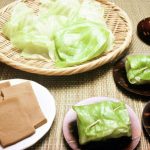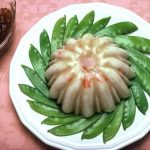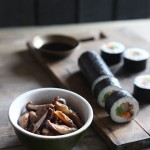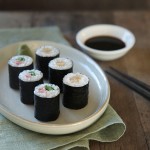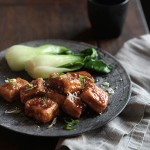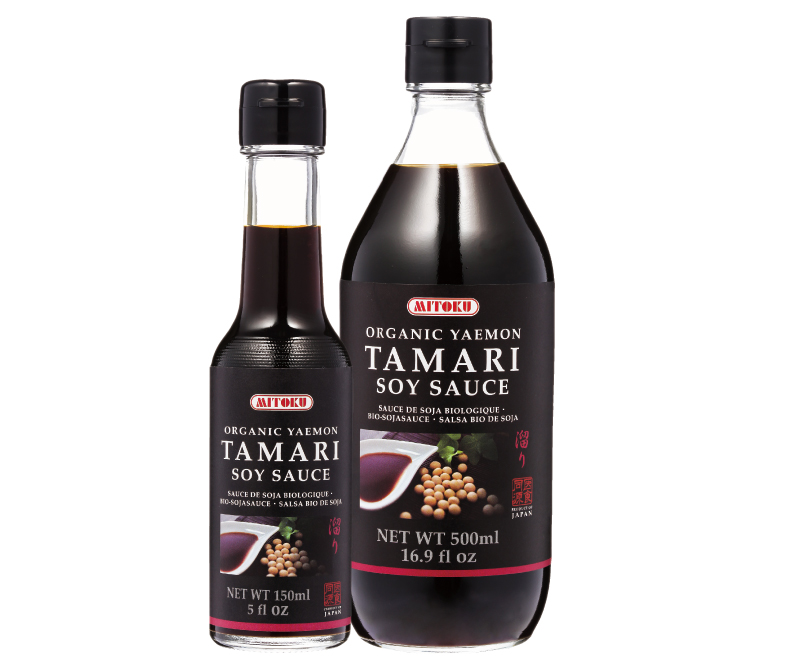
Organic Tamari Gluten-Free Soy Sauce
Mitoku’s traditional organic tamari is long aged in wood, contains no wheat, and is made with a very high percentage of whole soybeans. This gluten-free tamari is made with ten parts soybeans to five parts water, which means that, during brewing, the moromi (mash) of whole ingredients is extremely thick. When this is pressed to extract the liquid, the resulting sauce is highly concentrated, umami-rich, and has a deeply satisfying complexity of flavor thanks to its abundance of amino acids. This double concentrated tamari is made by a family firm using a time-consuming traditional method that is now overseen by 5th and 6th generation brewmasters. Employing the same trusted techniques as their forebears, in use since the company’s establishment in 1871, the brewmasters keep careful watch over the tamari as it undergoes natural fermentation and aging in wooden casks for over 18 months. After this long fermentation, the flavorful liquid is pressed out, filtered, and bottled. This firm embodies Japan’s small but surviving traditional tamari soy sauce industry. Mitoku’s tamari is the continuation of this long heritage.
Taketoyo, home to authentic Japanese tamari
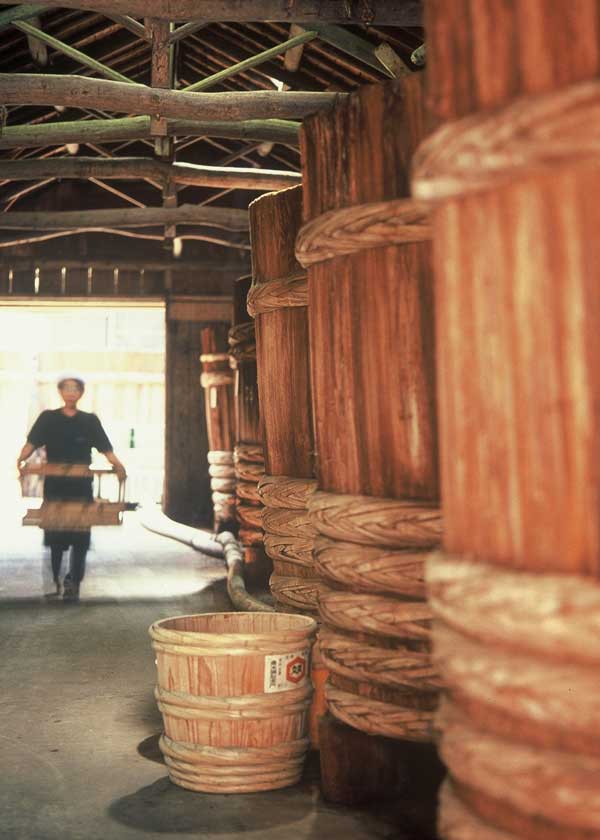
©︎Michael Boyny
Mitoku’s tamari gluten-free soy sauce is produced in Taketoyo, a town located on the Chita Peninsula of Aichi Prefecture. The area has long been known for its local cuisine, which is distinguished by dishes intensely dark in color and rich in taste. The secret behind this characteristic intensity lies in the local seasonings, namely tamari and soy miso. There are good reasons why Taketoyo came to be a center of miso and tamari production. Firstly, the water of the Chita Peninsula is hard water, rich in calcium and magnesium. The minerals in this water work to activate the yeast used in fermentation. Secondly, strong winter winds prevent the proliferation of unwanted bacteria during preparation, while the summer humidity helps to enhance the flavor of the miso and tamari as it matures. After the downfall of the area’s once flourishing local sake industry, the barrels, warehouses, and equipment that had previously been used to make sake was repurposed for the production of miso and tamari, and thus a new local industry was born.
Learn more about the story of our tamari producer.

The Minamigura Aoki Yaemon Company, founded in 1871, has been a Mitoku supplier for many years. Located in Taketoyo, Aichi Prefecture, a small town renowned for its traditional tamari, they are one of just a few local producers that have survived until the present day.
This family firm is currently headed by its 5th generation president, Yoshio Aoki, also known by his inherited title of “Yaemon”, who continues to use time-honored methods of production, passed down through the generations, to ensure that Yaemon Tamari tastes just as it always has done.
Inside their storehouse, in use since the company was founded, you will find rows of towering 150-year-old cedar vats full of thick, rich tamari. The air here is filled with the heady aroma of fermenting soy sauce, and, if you listen carefully, you may be able to hear the sound of the bubbling brew, particularly on hot summer nights.
Koji-making is everything to Yaemon Tamari
One the most crucial elements in the production of traditional tamari is koji (Aspergillus oryzae), the quality of which will play a key role in determining the taste of the final product. This powerful yet delicate microbial culture requires optimum conditions to thrive, and creating the right environment is a task for experienced brewers, who must monitor each stage of the koji-making process carefully to ensure the quality of the finished product.
When conditions are suitable, the koji makers begin each day by soaking choice organic soybeans in water. The next morning, the swollen beans are placed in a one-ton capacity steamer. After cooking, the soft beans are crushed into tiny balls called miso dama. These balls are dusted with a mixture of Aspergillus spores and roasted soy flour, then placed in a special room to incubate for about three days.
During this time, the temperature and humidity of the incubation chamber are carefully controlled. Once the sweet smelling, fluffy, pale yellow balls of koji are ready, they are removed from the incubator and placed left to dry for two weeks. Minamigura are the only tamari company that uses this unique drying process, which, according to Yaemon, is what gives their tamari its extra thick, rich quality and concentrated flavor.
The koji is placed in the cedar vats together with salted water to form a fermenting mash called moromi. Then 1,000 pounds of river stones are placed on top of the vats to weigh them down. The next step is to ensure that the koji absorbs the salt water evenly, which is done using a process called kumikake. Because the moromi is closer to a solid than a liquid, it is hard to churn by hand. For this reason, the vats are equipped with a cylinder running from top to bottom. The liquid that pools at the bottom of the vats is scooped up and poured back over the mixture from the top in a process similar to basting.
Kumikake, which requires a great deal of physical strength and patience, is performed three to forty times daily for the first two weeks after the koji and salted water are mixed, then once every three days or so for the following two weeks. From the second month onwards, the process is only carried out frequently enough to prevent the surface of the mixture from drying out. With maturation well under way, it is at this point that nature is allowed to take over.
The mixture is left to mature over two summers in the natural conditions of the storehouse, just as it has been for more than a century. During the long aging process, the enzymes from the koji and naturally occurring yeasts and bacteria that inhabit the building slowly break down the moromi, transforming the complex carbohydrates, proteins, and oils of the soybeans into sweet sugars and flavorful amino acids and fatty acids. The mature fermented moromi is then placed in cotton sacks and pressed under great force to extract its dark liquid, a mixture of tamari and crude soy oil. The oil, which rises to the surface, is removed. Then the tamari is finally ready for settling and bottling. The entire manufacturing process takes about 18 months.
Tamari is a uniquely delicious, versatile seasoning that enhances the flavor of soups, sauces, vegetables, dips, and entrées. Tamari can be expensive, but because our tamari is highly concentrated, a little goes a long way. Reduce the amount of soy sauce called for in a recipe by about 25% when cooking with Mitoku Tamari.Show more...
Related Recipes
-
Pasta Salad with Peanut Sauce
-
Tofu in a Blanket
-
Clear Gravy
-
Noodles in Broth
-
Simmered Shiitake with Soy Sauce and Mirin
-
Sushi Ginger Rolls
-
Teriyaki Tofu
-
Teriyaki Grilled Seasonal Vegetables
-
Summer Soba
-
Simmered Buttercup Squash
-
Broiled Marinated Snapper
-
Burdock Kinpira
-
Spicy Soba Salad
-
Clear Soup
-
Dried Tofu with Ginger
-
New England Boiled Dinner
-
Marinated Steamed White Fish Fillets




